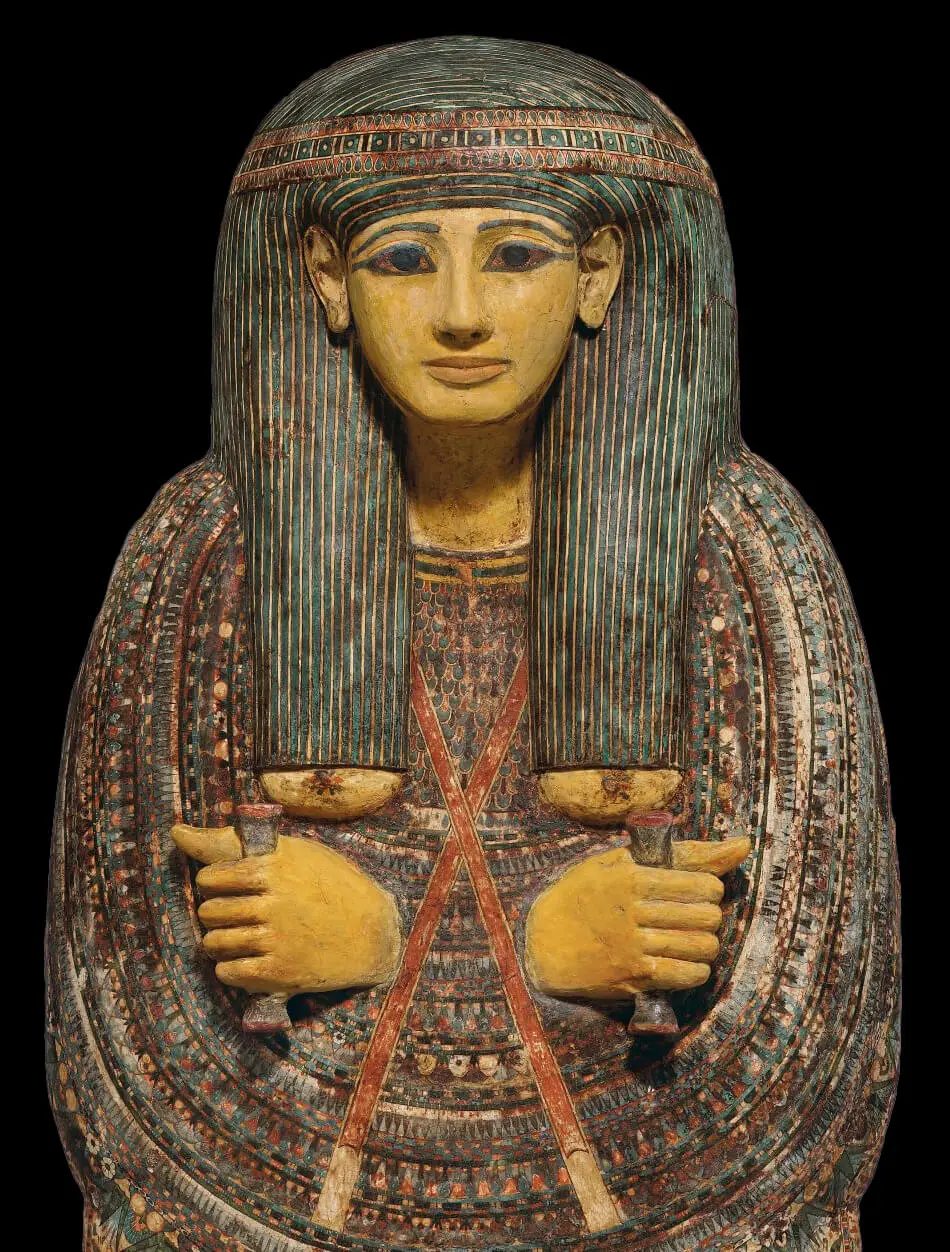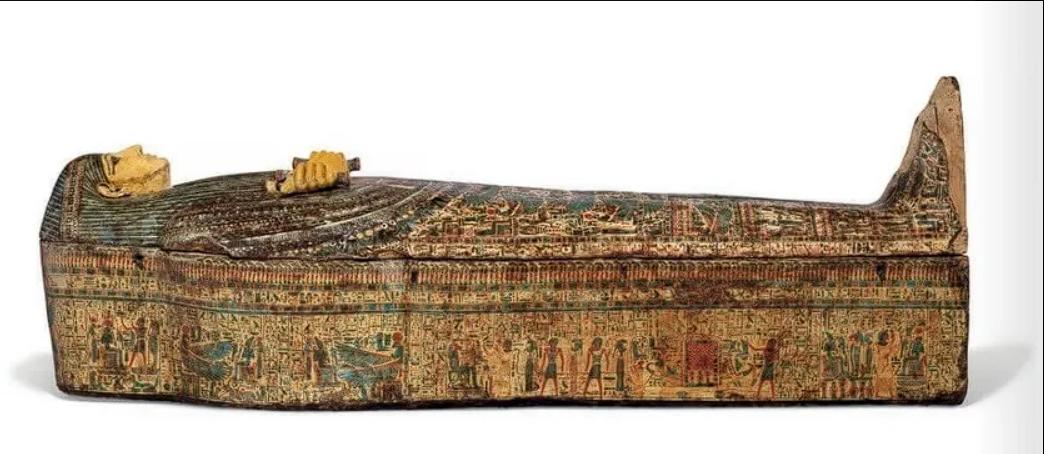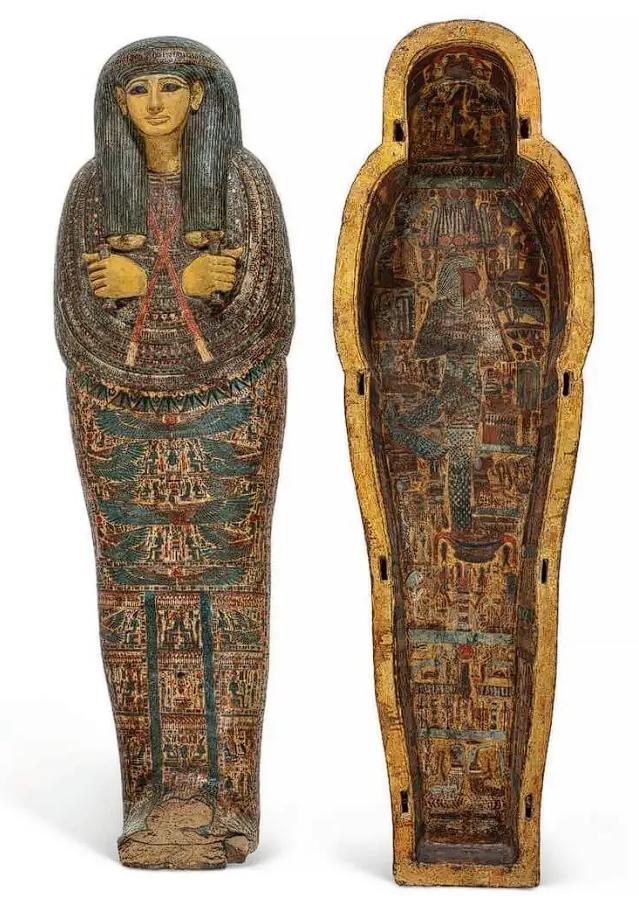The intriguing case of Pa-di-tu-Amun’s coffin, a vessel originally designed for a female priestess but later repurposed for a man, offers a compelling glimpse into the multifaceted motivations behind the reuse of burial objects in ancient Egypt. This discovery, spanning millennia and continents, raises questions about economy, religion, and the afterlife.
Economic Pragmatism: Resourcefulness in the Face of Scarcity:
Ancient Egyptians, like many societies, faced economic constraints that likely influenced their burial practices.
Cost-Effective Solutions:
- Crafting a new, elaborately decorated coffin was a significant financial undertaking. Repurposing an existing one presented a cost-effective alternative, especially during periods of economic hardship or political instability.
- The Third Intermediate Period, characterized by fragmentation and shifting power dynamics, might have necessitated such pragmatic solutions.
- The fact that the coffin was reused, shows that function, was more important than personalization.
Time and Labor Efficiency:
- Preparing a new coffin demanded considerable time and skilled labor. Repurposing an existing one would have expedited the burial process, allowing for a more timely interment.
- This efficiency could have been particularly crucial in times of crisis or when resources were stretched thin.
- The speed of repurposing, would have been a large factor, in times of need.
Material Conservation:

- Even if the coffin’s original design was deemed unsuitable, the valuable materials used in its decoration, such as gold leaf and pigments, could have been salvaged and reused.
- This practice would have conserved precious resources and reduced the need to acquire new materials.
- The reuse of the materiels, shows a level of resourcefulness.
The Shadow of Tomb Looting: Disruption and Re-appropriation:
Tomb looting, a pervasive issue in ancient Egypt, likely played a role in the repurposing of burial objects.
Looting and Re-Sale:
- Tomb robbers, driven by greed, would have plundered tombs, stealing valuable artifacts, including coffins, for resale.
- These stolen coffins could have been repurposed for new burials, with the original inscriptions defaced or altered to conceal their origins.
- This illegal activity, directly affected the availability, and the condition, of burial objects.
Secondary Use After Disruption:
- If a tomb was disturbed or damaged, surviving family members or officials might have re-appropriated existing coffins for new burials.
- This practice would have ensured that the deceased received a proper burial, even if their original tomb was compromised.
- This action, would have been seen as a necessary, and respectful, action.
Shifting Religious Practices: Adaptation and Evolution:
Ancient Egyptian religious beliefs and practices were not static, and changes in these beliefs could have influenced burial customs.
Adaptation to New Deities:

- The popularity of deities and the emphasis on specific burial rituals evolved over time.
- While the original coffin was made for a “Chantress of Amun,” changes in religious preferences might have led to its reuse for a male individual.
- Religious flexibility, allowed for the reuse of artifacts.
Practicality Over Personalization:
- In some cases, the practical function of the coffin as a vessel for the deceased might have outweighed the importance of its original personalization.
- The belief in the afterlife required a container for the soul’s journey, and an existing coffin could have fulfilled this purpose, regardless of its original owner.
- The afterlife, was the main concern, and the vessel was a tool for that journey.
Social Hierarchy Changes:
- The social hierarchy of ancient Egypt changed through the years.
- Items, and vessels, that where once only for a specific class, could become available to others.
The repurposing of Pa-di-tu-Amun’s coffin likely resulted from a confluence of factors, including economic necessity, the disruptive influence of tomb looting, and the evolving nature of ancient Egyptian religious and social practices. This discovery offers a compelling reminder of the complex and dynamic nature of ancient civilizations.

CÁC TIN KHÁC
Mary Walton: The Forgotten Inventor Who Helped Clean Up America’s Cities
Tomb of Queen Nefertari in the Valley of the Queens, Egypt
Discover the Hypostyle Hall of the Temple of Hathor at Dendera
Venus de Losange: Unveiling the Mystery of a 20,000-Year-Old Paleolithic Icon